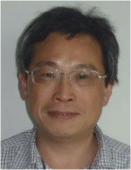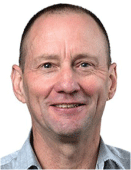Petrophysical and geochemical interpretations of well logs from the pre-Carboniferous succession in Barnicarndy 1, Canning Basin, Western Australia
Liuqi Wang A D , Dianne S. Edwards A , Adam Bailey A , Lidena K. Carr A , Chris J. Boreham A , Emmanuelle Grosjean A , Leon Normore B , Jade Anderson A , Amber J. M. Jarrett A , Susannah MacFarlane A , Chris Southby A , Chris Carson A , Kamal Khider A , Paul Henson A , Peter Haines B and Mike Walker CA Geoscience Australia, GPO Box 378, Canberra, ACT 2601, Australia.
B Geological Survey of Western Australia, Locked Bag 100, East Perth, WA 6892, Australia.
C Walker Petrophysics Pty Ltd, Wyss Lane, North Lake, WA 6163, Australia.
D Corresponding author. Email: liuqi.wang@ga.gov.au
The APPEA Journal 61(1) 253-270 https://doi.org/10.1071/AJ20038
Submitted: 17 December 2020 Accepted: 21 January 2021 Published: 2 July 2021
Journal Compilation © APPEA 2021 Open Access CC BY
Abstract
Barnicarndy 1 is a stratigraphic well drilled in the southern part of the Canning Basin’s Barnicarndy Graben under Geoscience Australia’s Exploring for the Future program in collaboration with the Geological Survey of Western Australia to provide stratigraphic data for this poorly understood tectonic component. The well intersects a thin Cenozoic section, Permian–Carboniferous fluvial clastics and glacial diamictites and a thick pre-Carboniferous succession (855–2585 mRT) unconformably overlying Neoproterozoic metasedimentary rocks. Three informal siliciclastic intervals were defined based on core lithology, well logs, chemical and mineral compositions: the Upper Sandstone (855–1348.1 mRT), Middle Interval (1348.1–2443.4 mRT) and Lower Sandstone (2443.4–2585 mRT). The Middle Interval was further divided into six internal zones. Both conventional methods and artificial neural network technology were applied to well logs to interpret petrophysical and elastic properties, total organic carbon (TOC) content, pyrolysis products from the cracking of organic matter (S2) and mineral compositions. Average sandstone porosity and reservoir permeability are 17.9% and 464.5 mD in the Upper Sandstone and 6.75% and 10 mD in the Lower Sandstone. The Middle Interval claystone has an average porosity and permeability of 4.17% and 0.006 mD, and average TOC content and S2 value of 0.17 wt% and 0.047 mg HC/g rock, with maximum values of 0.66 wt% and 0.46 mg HC/g rock, respectively. Correlations of mineral compositions and petrophysical, geomechanical and organic geochemical properties of the Middle Interval have been conducted and demonstrate that these sediments are organically lean and lie within the oil and gas window.
Keywords: Canning Basin, elastic property, fluid inclusions, geochemical interpretation, Geological Survey of Western Australia, Geoscience Australia, hydrocarbon potential, mineral composition, neural network, organic and inorganic chemical composition, permeability, petrophysical interpretation, Pilbara, porosity, pre-Carboniferous, Barnicarndy 1, well log.

Liuqi Wang is a Well Analyst at Geoscience Australia, working in the Minerals, Energy and Groundwater Division. He received his PhD in Petroleum Engineering and worked as a Research Fellow at the University of New South Wales before joining Geoscience Australia. His research interests include petrophysics, static and dynamic reservoir modelling, applied statistics and artificial intelligence. He is a member of PESA and EAGE. |

Dianne S. Edwards is a Principal Petroleum Geochemist at Geoscience Australia, working in the Minerals, Energy and Groundwater Division. Her scientific focus is on defining the petroleum systems of Australia’s petroliferous basins, including both conventional and unconventional play types. She is involved in building database systems to release petroleum geochemical data via the portal https://portal.ga.gov.au. Dianne received her BSc (Hons) degree in Geology and MSc in Organic Petrology and Organic Geochemistry from the University of Newcastle-upon-Tyne (UK). She was awarded her PhD from the University of Adelaide in 1996. In 2018, she received the Australian Organic Geochemistry Conference Medal for lifetime achievement in the field of Organic Geochemistry. Dianne is a member of PESA. |

Adam H.E. Bailey is a Petroleum Geoscientist at Geoscience Australia, with expertise in petroleum geomechanics, structural geology and basin analysis. He graduated with a BSc (Hons) in 2012 and a PhD in 2016 from the Australian School of Petroleum at the University of Adelaide. Working with the Onshore Energy Systems team at Geoscience Australia, Adam is currently working on the flagship Exploring for the Future Program in Northern Australia and is the geology discipline lead for the Geological and Bioregional Assessment Programme. |

Lidena K. Carr is a Geoscientist for the Onshore Energy Systems program within the Resources Division at Geoscience Australia. She graduated from the Australian National University (ANU), majoring in Geology and Human Ecology, with a BA/BSc (Hons) in 2004 and began working as a technical officer at the Research School of Earth Sciences (ANU). In 2007, she joined Geoscience Australia with the then ACRES (satellite imagery). In 2009, she moved to the then Onshore Energy and Mineral Division to work as a Seismic Interpreter and Basin Analyst. Currently, she is the acting Director of the Onshore Energy Systems directorate working on the Exploring for the Future program. She is member of PESA and GSA. |

Christopher J. Boreham is a Principal Petroleum Geochemist at Geoscience Australia, working in the Minerals, Energy and Groundwater Division. He obtained his BSc (Hons) in Chemistry from the University of Queensland and was awarded a PhD in Chemistry at ANU. He has worked at Geoscience Australia for four decades. Chris has a wide experience in the application of organic geochemistry to the evolution of oil and gas in Australian sedimentary basins. He has recently extended these geochemical studies to unconventional petroleum (coal seam methane, shale gas and oil), helium, hydrogen and abiogenic hydrocarbons, as well as being involved in CO2CRC’s studies on the injection of CO2 into a depleted natural gas field and a saline aquifer. In 2010, he received the Australian Organic Geochemistry Conference Medal for lifetime achievement in the field of Organic Geochemistry. Chris is a member of PESA. |

Emmanuelle Grosjean is an Organic Geochemist at Geoscience Australia, working in the Minerals, Energy and Groundwater Division. Emmanuelle applies organic geochemistry to assess the hydrocarbon prospectivity of Australia’s offshore and onshore sedimentary basins. Emmanuelle holds a PhD in Organic Chemistry from the University of Strasbourg, France. Before joining Geoscience Australia in 2005, she worked on the Precambrian petroleum systems of the South Oman Salt Basin as a Post-doctoral Associate at the Massachusetts Institute of Technology. |

For the past eight years Leon Normore has been a Senior Geologist in the Geological Survey and Resource Strategy Division, Department of Mines, Industry Regulation and Safety at the Geological Survey of Western Australia, focused primarily on the Canning Basin of Western Australia. Leon’s previous work includes petroleum and mineral exploration in Canada and the United States, as well as regional mapping with the Geological Survey of Newfoundland and Labrador. |

Jade Anderson works as a Geoscientist in basin systems at Geoscience Australia. She completed a PhD at the University of Adelaide in 2015 in the areas of metamorphic geology, geochronology and Proterozoic Australia tectonics. |

Amber Jarrett is a Geochemist in the Minerals, Energy and Groundwater Division, Geoscience Australia. Her research interests include basin hosted resource potential, organic-inorganic geochemistry, isotopes, Proterozoic biomarkers and early life. Amber graduated with BSc (Hons), majoring in both Geology and Biology 2008, and a PhD in 2014 from ANU. Amber is also a key researcher in the MinExCRC. |

Susannah K. MacFarlane is a Petroleum Geoscientist at Geoscience Australia, working in the Onshore Energy Systems team. Susannah did her undergraduate degree and PhD at the University College London, graduating in 2008. She subsequently spent several years working for industry in the UK and Australia before joining Geoscience Australia in 2016. Her current research interests are basin analysis and petroleum systems modelling. |

Chris Southby is a Geoscientist in the Geoscience Australia Resources Division, Energy Systems Branch. He completed his Honours at ANU in 2004 on palaeo-climate geochemistry of corals from Papua New Guinea. Since joining Geoscience Australia in 2008, he has contributed to a number of projects, including the National Carbon Mapping and Infrastructure Plan, the Vlaming Sub-basin CO2 Storage Assessment and the Houtman Sub-basin Prospectivity Project. He is now part of the Onshore Energy Systems team at Geoscience Australia, currently working under the Exploring for the Future program initiative. |

Chris Carson has worked in Antarctica, Canadian Arctic, Alaska, New Caledonia and northern and central Australia, specialising in metamorphic petrology, geochronology and structural geology. Joining Geoscience Australia in 2006, he dabbled in SHRIMP geochronology and, in 2017, joined the Onshore Energy program, working in the South Nicholson region of the NT. |

Kamal Khider is a Senior Geoscientist in Geoscience Australia’s Resources Division, Energy Systems Branch. He has a BSc, MSc and PhD (Stratigraphy and Sedimentology) and a PhD in Applied Geochemistry. Kamal has long standing academic and consultative experience in geosciences, working in many academic and industrial geological organisations in Australia, the Middle East and North Africa. He worked on the regional geological appraisal of the Eocene–Oligocene–Miocene boundaries IGCP 174, regional geochemical assessment of the Cobar-Girilambone region in NSW and the Queensland Carbon Dioxide Geological Storage Atlas. Since 2007, he has worked on several of Geoscience Australia’s petroleum and carbon capture and storage projects. Kamal is a member of AAPG, GSA and SEPM. |

Paul A. Henson graduated from the University of Tasmania and is currently the Director of the Onshore Energy Systems Section at Geoscience Australia. He has extensive experience in the minerals sector, working on mineral systems in Proterozoic and Archaean terranes. Since 2010, he led the Australian Governments’ onshore carbon storage program, undertaking deep onshore drilling and seismic acquisition programs in collaboration with the states and industry. In addition, he now manages the Exploring for the Future - Energy Program, leading a team of researchers to acquire new pre-competitive geoscientific data to improve our understanding of the oil and gas potential of Australian onshore basins. |

Peter Haines holds Honours and PhD degrees in Geology from the University of Adelaide. He has previously held positions at the Northern Territory Geological Survey and Universities of South Australia, Adelaide and Tasmania. He joined the Geological Survey of Western Australia in 2003, currently holding title of Basins Custodian within the Energy Geoscience and Carbon Strategy Branch. He is a member of PESA and GSA. |

Mike Walker is currently the Principal Petrophysicist for Walker Petrophysics Pty Ltd, Mike has 39 years of oil industry experience with major operators and small companies and a major service company. Prior to founding Walker Petrophysics in 2004, Mike was Staff (Region) Petrophysicist for Baker Atlas Geoscience, the geological consulting and interpretation arm of Baker Hughes for six years, which involved him working as a consultant for external clients and as well as a mentor and advisor inside the company. Before that, he worked as Senior Petrophysicist with Woodside and BHP petroleum and Petroleum Geologist with CSR Petroleum. Mike obtained his BSc (Hons) in Applied Geology form the University of New South Wales in 1981. He also has undertaken local and remote mentoring projects with junior professional staff and technical assistants and has also provided on-the-job training for local professionals in China, Indonesia, Malaysia, Bangladesh and Vietnam. |
References
Alavi, S. N. (2013). Structure, stratigraphy, and petroleum prospectivity of the Waukarlycarly Embayment, Canning Basin, Western Australia. Geological Survey of Western Australia, Record 2013/10, 32p.Backhouse, J. (2020). Waukarlycarly 1: Palynology of 7 samples. Backhouse Biostrat P/L. Report prepared for Department of Mines, Industry Regulation and Safety. Available at https://wapims.dmp.wa.gov.au/WAPIMS/Search/Wells [Verified 19 January 2021].
Bagas, L., Anderson, J. A. C., and Bierlein, F. P. (2009). Palaeoproterozoic evolution of the Killi Killi Formation and orogenic gold mineralization in Granite-Tanami Orogen, Western Australia. Ore Geology Reviews 35, 47–67.
| Palaeoproterozoic evolution of the Killi Killi Formation and orogenic gold mineralization in Granite-Tanami Orogen, Western Australia.Crossref | GoogleScholarGoogle Scholar |
Behar, F., Beaumont, D. B., and Penteado, H. L. (2001). Rock-Eval 6 technology: performances and developments. Oil & Gas Science and Technology – Rev. IFP 56, 111–134.
| Rock-Eval 6 technology: performances and developments.Crossref | GoogleScholarGoogle Scholar |
Carr, L. K., Edwards, D. S., Southby, C., Henson, P., Haines, P. W., Normore, L., Zhan, A., Brooks, D., MacFarlane, S., Boreham, C. J., Grosjean, E., Mory, A. J., Wang, L., and Gunning, M-E. (2020). Kidson Sub-basin seismic survey and Waukarlycarly 1 stratigraphic well: an acquisition program for evaluating Canning Basin petroleum systems. In ‘Exploring for the Future: Extended Abstracts’. (Eds K. Czarnota, I. Roach, S. Abbott, M. Haynes, N. Kositcin, A. Ray and E. Slatter.) pp. 1–4. (Geoscience Australia, Canberra).
Core Lab (2020a). Routine core analysis report, Waukarlycarly 1, Western Australia. Report prepared for Department of Mines, Industry Regulation and Safety. Core Laboratories Australia Pty Ltd. Available at https://wapims.dmp.wa.gov.au/WAPIMS/Search/Wells [Verified 19 January 2021].
Core Lab (2020b). Petrographic analysis of rotary sidewall cores, Waukarlycarly 1, Canning Basin, Australia. Available at https://wapims.dmp.wa.gov.au/WAPIMS/Search/Wells [Verified 19 January 2021].
Edwards, D. S., Gilmore, S., Wang, L., and Grosjean, E. (2021). Inorganic geochemical results for Barnicarndy 1, Canning Basin, Western Australia. Geoscience Australia Record (eCat 144558). In preparation.
FIT (2020). A stratigraphic reconstruction of bulk volatile chemistry from fluid inclusions in Waukarlycarly 1. Prepared by FIT for Geoscience Australia. Available at https://wapims.dmp.wa.gov.au/WAPIMS/Search/Wells [Verified 19 January 2021].
Forbes, A., Sullivan, N., Edwards, D. S., and Grosjean, E. (2020). Chemostratigraphy of Waukarlycarly-1, Canning Basin, Western Australia. Report CAu50017. Chemostrat Australia Pty, 2020. Available at https://wapims.dmp.wa.gov.au/WAPIMS/Search/Wells [Verified 19 January 2021].
Geological Survey of Western Australia (GSWA) (2020a). HyLogger record 2020/6, Appendix I HyLogger-3 core summary HyLogger Rec 2020_6, W006030 A1.zip. Available at https://wapims.dmp.wa.gov.au/WAPIMS/Search/Wells [Verified 19 January 2021].
Geological Survey of Western Australia (GSWA) (2020b). HyLogger record 2020/7, Appendix H HyLogger-3 ditch cuttings summary HyLogger Rec 2020_7, W006030 A1.zip. Available at https://wapims.dmp.wa.gov.au/WAPIMS/Search/Wells [Verified 19 January 2021].
Geological Survey of Western Australia (GSWA) (2020c). Barnicarndy 1 well completion report. Available at https://wapims.dmp.wa.gov.au/WAPIMS/Search/Wells [Verified 19 January 2021].
Ghori, K. A. R. (2013). Emerging unconventional shale plays in Western Australia. The APPEA Journal 53, 313–336.
| Emerging unconventional shale plays in Western Australia.Crossref | GoogleScholarGoogle Scholar |
Gray, D., Anderson, P., Logel, J., Delbecq, F., Schmidt, D., and Schmid, R. (2012). Estimation of stress and geomechanical properties using 3D seismic data. First Break 30, 59–68.
| Estimation of stress and geomechanical properties using 3D seismic data.Crossref | GoogleScholarGoogle Scholar |
Grosjean, E., Edwards, D. S., Boreham, C. J., Hong, Z., Chen, J., Jinadasa, N., and Buckler, T. (2020). Rock-Eval pyrolysis data from Waukarlycarly 1, Canning Basin, Australia. Destructive Analysis Report 2020-003. Available at https://wapims.dmp.wa.gov.au/WAPIMS/Search/Wells [Verified 19 January 2021].
Hect-Nielsen, R. (1990). ‘Neurocomputing.’ (Addison-Wesley: Menlo Park, CA, USA.)
Herron, S. L. (1991). In situ evaluation of potential source rocks by wireline logs. In ‘Source and Migration Processes and Evaluation Techniques. Treatise of Petroleum Geology. Handbook of Petroleum Geology’. (Eds N. H. Foster and E. A. Beaumont.) pp. 127–134. (American Association of Petroleum Geologists: USA.)
Hopfield, J. J. (1985). ‘Neural’ computation of decisions in optimization problem. Biological Cybernetics 52, 141–152.
| 4027280PubMed |
Huang, Y., Gedeon, T. D., and Wong, P. M. (2001). An integrated neural-fuzzy-genetic-algorithm using hyper-surface membership functions to predict permeability in petroleum reservoirs. Engineering Applications of Artificial Intelligence 14, 15–21.
| An integrated neural-fuzzy-genetic-algorithm using hyper-surface membership functions to predict permeability in petroleum reservoirs.Crossref | GoogleScholarGoogle Scholar |
Jarrett, A. J. M., Bailey, A. H. E., Dewhurst, D. N., Esteban, L., Kager, S., and Monmusson, L. (2020). Exploring for the Future - Waukarlycarly 1 petrophysical testing program data release, Canning Basin, Australia. Record 2020/28. Geoscience Australia, Canberra.
Jarvie, D. M., Hill, R. J., Ruble, T. E., and Pollastro, R. M. (2007). Unconventional shale-gas systems: the Mississippian Barnett Shale of north-central Texas as one model for thermogenic shale-gas assessment. AAPG Bulletin 91, 475–499.
| Unconventional shale-gas systems: the Mississippian Barnett Shale of north-central Texas as one model for thermogenic shale-gas assessment.Crossref | GoogleScholarGoogle Scholar |
Kalogirou, S. A. (2000). Applications of artificial neural-networks for energy systems. Applied Energy 67, 17–35.
| Applications of artificial neural-networks for energy systems.Crossref | GoogleScholarGoogle Scholar |
Kennard, J. M., Jackson, M. J., Romine, K. K., Shaw, R. D., and Southgate, P. N. (1994). Depositional sequences and associated petroleum systems of the Canning Basin, WA. In ‘The Sedimentary Basins of Western Australia.’ (Eds P. G. Purcell and R. R. Purcell.) pp. 657–676. (Proceedings of the Petroleum Exploration Society of Australia Symposium: Perth, WA, 1994.)
Luo, Q., Fariborz, G., Zhong, N., Wang, Y., Nansheng Qiu, N., Skovsted, C. B., Suchý, V., Schovsbo, N. H., Morga, R., Xu, Y., Hao, J., Liu, A., Wu, J., Cao, W., Min, X., and Wu, J. (2020). Graptolites as fossil geo-thermometers and source material of hydrocarbons: an overview of four decades of progress. Journal of Earth-Science Reviews 200, .
| Graptolites as fossil geo-thermometers and source material of hydrocarbons: an overview of four decades of progress.Crossref | GoogleScholarGoogle Scholar |
MacFarlane, S. K., Palu, T. J., Edwards, D. S., Boreham, C. J., Wang, L., Grosjean, E., Carr, L. K., and Henson, P. (2021). Canning Basin: Petroleum systems modelling and associated data analysis in the Kidson and Willara sub-basins and the Barnicarndy Graben. Geoscience Australia Record (eCat144508). In preparation.
Normore, L. S., and Rapaic, M. (2020). Barnicarndy 1 basic data: well completion report. Geological Survey of Western Australia. Report 206, 2020. Available at https://wapims.dmp.wa.gov.au/WAPIMS/Search/Wells [Verified 19 January 2021].
Normore, L. S., and Zhan, Y. (2020). Exploring the southwest Canning Basin: GSWA Waukarlycarly 1 and the Kidson Sub-basin seismic survey. GSWA 2020 extended abstract, Perth. Available at https://dmpbookshop.eruditetechnologies.com.au//product/exploring-the-southwest-canning-basin-gswa-waukarlycarly-1-and-the-kidson-sub-basin-seismic-survey.do [Verified 19 January 2021].
Normore, L., Haines, P. W., Carr, L. K., Henson, P., Zhan, Y., Wingate, M. T. D., Zhen, Y. Y., Lu, Y., Martin, S., Kelsey, D., Allen, H., and Fielding, I. (2021). Barnicarndy Graben, southern Canning Basin: stratigraphy defined by the Barnicarndy 1 stratigraphic well. The APPEA Journal 61, 224–235.
| Barnicarndy Graben, southern Canning Basin: stratigraphy defined by the Barnicarndy 1 stratigraphic well.Crossref | GoogleScholarGoogle Scholar |
Ouadfeul, S. A., and Aliouane, L. (2015). Total organic carbon prediction in shale gas reservoirs from well logs data using the multilayer perceptron neural network with Levenberg Marquardt training algorithm: application to Barnett Shale. Arabian Journal for Science and Engineering 40, 3345–3349.
| Total organic carbon prediction in shale gas reservoirs from well logs data using the multilayer perceptron neural network with Levenberg Marquardt training algorithm: application to Barnett Shale.Crossref | GoogleScholarGoogle Scholar |
Passey, Q. R., Creaney, S., Kulla, J. B., Moretti, F. J., and Stroud, J. D. (1990). A practical model for organic richness from porosity and resistivity logs. AAPG Bulletin 74, 1777–1794.
Passey, Q. R., Bohacs, K. M., Esch, W. L., Klimentidis, R., and Sinha, S. (2010). From oil-prone source rock to gas-producing shale reservoir – geologic and petrophysical characterization of unconventional shale-gas reservoirs. SPE 131350, CPS/SPE International Oil & Gas Conference and Exhibition, Beijing, China, 8–10 June 2010.
Ranasinghe, S.P., and Crosdale, P. J. (2020). Report on source rock type, maturation levels and hydrocarbon potential of a suite of samples from Waukarlycarly-1 in the Canning Basin, Western Australia. Report prepared by Energy Resources Consulting Pty Ltd for Geoscience Australia, Canberra. Available at https://wapims.dmp.wa.gov.au/WAPIMS/Search/Wells [Verified 19 January 2021].
Randive, K. R., Hari, K. R., Dora, M. L., Malpe, D. B., and Bhondwe, A. A. (2014). Study of fluid inclusions: methods, techniques and applications. Geological Magazine 29, 19–28.
Rickman, R. (2008). A practical use of shale petrophysics for stimulation design optimization: all shale plays are not clones of the Barnett shale. SPE Annual Technical Conference and Exhibition, 21–24 September 2008, Denver, Colorado, USA, SPE 115258.
Schlumberger (1991). Log Interpretation Principles/Applications. (Schlumberger Educational Services: Houston, Texas, USA.)
Schmoker, J. W. (1981). Determination of organic-matter content of Appalachian Devonian shales from gamma-ray logs. AAPG Bulletin 65, 1285–1298.
Schmoker, J. W., and Hester, T. C. (1983). Organic carbon in Bakken Formation, United States portion of Williston Basin. AAPG Bulletin 67, 2165–2174.
Tissot, B. P., and Welte, D. H. (1984). ‘Petroleum Formation and Occurrence’. 2nd edn. (Springer-Verlag: Berlin.)
Walker Petrophysics Pty Ltd (2020). Petrophysical evaluation, Waukarlycarly 1. Walker Petrophysics Pty Ltd, WAPIMS. Available at https://wapims.dmp.wa.gov.au/WAPIMS/Search/Wells [Verified 19 January 2021].
Wang, L., Edwards, D. S., Bailey, A., Carr, L. K., Boreham, C. J., Grosjean, E., Anderson, J., Jarrett, A. J. M., McFarlane, S., Southby, C., Carson, C., Khider, K., Palu, T., and Henson, P. (2021). Well Log Data Analysis and Interpretation on the Pre-Carboniferous Succession in Waukarlycarly 1, Canning Basin, Western Australia. (Record 2021/03, Geoscience Australia.) http://dx.doi.org/10.11636/Record.2021.003
Weatherford (2007). Log Interpretation Charts, CompactTM Tools Series. Document 4060.01. (Weatherford: Houston, Texas, USA.)
Whitaker, A. J., Roach, I. C., Liu, S. F., and Wilford, J. R. (2010). Geology. In ‘Geological and Energy Implications of the Paterson Airborne Electromagnetic (AEM) Survey, Western Australia’. (Eds I. C. Roach), pp. 49–86. (Record 2010/12, Geoscience Australia.)
Wong, P. M., Jian, F. X., and Taggart, I. J. (1995). A critical comparison of neural networks and discriminant analysis in lithofacies, porosity and permeability predictions. Journal of Petroleum Geology 18, 191–206.
| A critical comparison of neural networks and discriminant analysis in lithofacies, porosity and permeability predictions.Crossref | GoogleScholarGoogle Scholar |
Yan, W., Wang, J., Liu, S., Wang, K., and Zhou, Y. (2014). Logging identification for the Longmaxi mud shale reservoir in the Jiaoshiba area, Sichuan Basin. Natural Gas Industry 34, 30–36.
| Logging identification for the Longmaxi mud shale reservoir in the Jiaoshiba area, Sichuan Basin.Crossref | GoogleScholarGoogle Scholar |
Zhan, Y., and Mory, A. J. (2013). Structural interpretation of the Northern Canning Basin, Western Australia. West Australian Basins Symposium 2013, Perth WA, August 2013. PDF 978-1-74168-440-7. Available at http://www.academia.edu/17437490/Structural_Interpretation_of_the_Northern_Canning_Basin_Western_Australia [Verified 19 January 2021].


